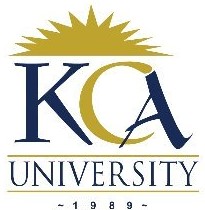
UNIVERSITY EXAMINATIONS: 2018/2019
EXAMINATION FOR THE DIPLOMA IN BUSINESS INFORMATION
TECHNOLOGY
DBIT306 OBJECT ORIENTED ANALYSIS AND DESIGN
DATE: AUGUST 2019 TIME: 2 HOURS
INSTRUCTIONS: Answer Question One & ANY OTHER TWO questions.
QUESTION ONE
a) Define the term object and describe the characteristics that an object should exhibit.
[4 Marks]
b) Define the following object oriented design paradigms:
i. Inheritance. [2 Marks]
ii. Polymorphism. [2 Marks]
iii. Abstraction. [2 Marks]
iv. Encapsulation. [2 Marks]
c) Edible Arts restaurant has one chef and one waiter. The chef is responsible for order of all
food ingredients, preparation of food and doing the washing up. The waiter is responsible
for taking the customer order, preparing the bill and taking the payment made by the
customer. The customer browses the menu, orders the food, consumes the food, orders the
bill and pays the bill.
Required: Draw a use case diagram for the restaurant showing the role of the chef, waiter
and customer. [5 Marks]
d) Differentiate coupling and cohesion and explain which of the two is desired in object
orientation. [5 Marks]
e) Define the term testing and describe the TWO basic types of testing. [5 Marks]
f) Describe THREE roles of use case diagrams in system development. [3 Marks]
QUESTION TWO
a) Describe the steps of waterfall model. [5 Marks]
b) Explain the advantages of prototyping as a system implementation Methodology.
[5 Marks]
c) Explain the different relationships used in UML class diagrams. [6 Marks]
d) List FOUR types of inheritance used in OOAD. [4 Marks]
QUESTION THREE
a) Identify and show the relationships between classes in the following scenario: [5 Marks]
An airline company has employees. A team builds an airplane which has a number of
components. An airplane lands and takes off from an airstrip in an airport. The plane carries
passengers from a source to destination. An airplane is managed by a captain and co-pilot
along with his crew consisting of airhostesses and attendants.
b) Explain the features targeted by the following implementation models. Use examples.
[8 Marks]
i. Component diagram
ii. Deployment diagram
c) What is an attribute? Give example. [2 Marks]
d) Explain FIVE advantages of modeling. [5 Marks]
QUESTION FOUR
a) With aid of diagrams explain FOUR symbols and notations used in an activity diagram.
[8 Marks]
b) Distinguish between the following: [4 Marks]
i) Class and Object
ii) Super class and sub-class
c) Outline four strengths of OOP. [4 Marks]
a) Discuss FOUR disadvantages of OOP. [4 Marks]
QUESTION FIVE
a) With the use of relevant symbols explain the THREE types of visibility specifiers
used in depicting object access in classes. [6 Marks]
b) Explain THREE symbols used in sequence diagrams. Use of diagrams is highly
recommended. [6 Marks]
c) Define robustness analysis and give FOUR advantages of robustness analysis.
[5 Marks]
d) Explain TREE types of cardinalities. [3 Marks]
